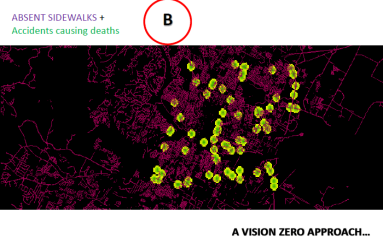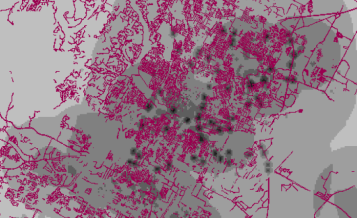Using GIS Analysis To Achieve Zero Traffic Casualties

A geographic information system (GIS) is a system designed to capture, store, manipulate, analyze, manage, and present all types of spatial or geographical data.
Vision Zero
Developed in Sweden (but now adopted in New York, Chicago and San Francisco), Vision Zero is a holistic traffic safety approach which aims to achieve zero deaths and zero serious injuries within the transportation network. The approach addresses the multi-faceted nature of traffic safety by considering land use, street design, culture change, traffic enforcement, etc. Central to Vision Zero is the belief that safety is the most important factor to consider for streets.
Initiated in Austin by the Pedestrian Advisory Council in summer 2014 and supported by numerous departments and community groups, City Council directed City Manager to create a Vision Zero Task Force.
Vision Zero Taskforce Agencies include representatives from City of Austin Departments and Boards & Commissions, State agencies, Community Representatives in the fields of Health, Active Transportation, Education, Social Services, Transportation Network Companies, and representatives of vulnerable populations.
The GIS process
The process overlays three sets of data in order to help redefine priorities to future pedestrian-oriented projects. These priorities can differ from existing priorities defined by the City.
With the inclusion of accident data and other factors in the equation, other patterns may be recognized.
See analysis at full resolution in the slideshow below…
Cities across the United States have adopted a Vision Zero Initiative, including New York, San Francisco, and Chicago. Additionally, 38 state Departments of Transportation have adopted Vision Zero initiatives, including Minnesota, Utah, Washington, Oregon, and West Virginia.
Related stories
- 'Zero' Became the Biggest Number in Road Safety
- Vision Zero Project: Rethinking 'Safe' Pedestrian Infrastructure in San Francisco
- How to Restore Walking and Cut Traffic Accidents
- Vision Zero
- Traffic Accident Prevention and Urban Safety
- Road Safety and Formula One and the United Nations
- San Rafael Must Get a Handle on Pedestrian Deaths
- How Driverless Vehicles Are Set to Transform Our Lives


